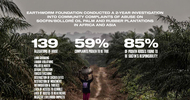Lexology | 20 April 2020
by CMS Ukraine
Ukraine: Opening the land market
by CMS Ukraine
On 31 March 2020, the Ukrainian Parliament adopted the new Law No. 2178-10, which opens the Ukrainian agricultural land market. Ukraine has the largest volume of farmland in Europe, but its agricultural land is mostly leased by producers.
Background
A prohibition (moratorium) on the disposal of agricultural land was established in October 2001. The moratorium was designed as a temporary measure to allow parliament to put in place legislative infrastructure for the market. However, the temporary measure went on for almost two decades until now.
What has changed?
According to the new Law 2178-10:
Buyers of agricultural land plots can be:
- Ukrainian entities with no foreign shareholders. These entities will be entitled to acquire agricultural land of up to 10,000 hectares from 1 January 2024. Before 1 January 2024, Ukrainian citizens may only acquire agricultural land plots up to 100 hectares from 01 July 2021;
- local communities;
-
the state of Ukraine.
Rules for foreign purchasers of agricultural land plots
Ukraine will hold a referendum that will decide whether foreign entities will be allowed to acquire agricultural land plots.
Foreign entities are and will be prohibited from buying agricultural land plots in a 50-km zone from the border of Ukraine regardless of the referendum results.
Restrictions on purchasing agricultural land plots
The following persons are and will be forbidden from purchasing agricultural land plots regardless of the referendum results:
- legal entities owned or beneficially owned by citizens of a state declared as an aggressor by Ukraine;
- members or former members of terrorist organisations;
- legal entities owned or beneficially owned by foreign states;
- legal entities in which the ultimate beneficiary cannot be determined;
- legal entities with ultimate beneficiaries registered in offshore zones as determined by the Ukrainian Government;
- persons and entities under economic or other sanctions imposed by Ukraine that restrict the acquisition of land plots, as well as their affiliated persons;
- Ukrainian legal entities controlled by persons and other legal entities registered in states that the Financial Action Task Force has included on the list of states that do not act to prevent money laundering.
State- and municipal-owned agricultural land plots
State- and municipal-owned agricultural land, as well as agricultural land plots located on the occupied territories of the Donetsk and Luhansk regions, and in Crimea, are under a prohibition of alienation.
Citizens who have the right of permanent use, the right of trusted inherited ownership, as well as tenants of agricultural land plots that acquired their lease right by re-registering the right of permanent use before 2010, may acquire the ownership right to such land without conducting an auction, for the price that is not higher than the market value.
Other issues
Until 1 January 2030, the sale price of farmland cannot be lower than its market value. As of 1 January 2020, the average market value of agricultural land was UAH 27,500 or EUR 930 per hectare.
Tenants have a pre-emptive right to purchase the leased land plot. The pre-emptive right can be transferred to a third party.
Non-compliance with law
If a person or a legal entity acquires a plot in breach of the new law (e.g. the area of the land exceeds 100 ha before 1 January 2024 or 10,000 ha afterwards), then such land plot must be disposed of within one year. Otherwise, a court will be able to confiscate the land. According to a special report by the World Bank, lifting the moratorium on agricultural land disposals has the potential to accelerate economic growth in Ukraine by 0.5-1.5% per year over the next five years. The moratorium was the biggest obstacle to attracting the necessary investment and increasing productivity in the sector. The absence of the land market resulted in the inefficient use of land and absence of sizeable investments. The abolition of the moratorium is expected to bring debt financing to the market, and increase productivity and total output.













